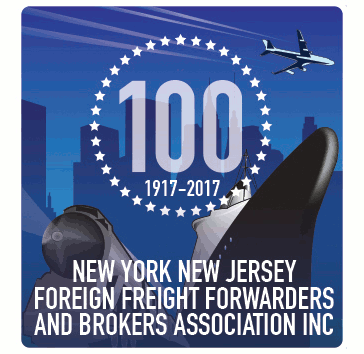Minimum Security Criteria for Importers
Some actors in the supply chain are able to better influence their business partners’ security practices. Importers are the driving force in the importation process and have the leverage to require that their business partners comply with CTPAT’s MSC. Regardless of how much leverage a Member has in regard to influencing business partners’ practices, CTPAT expects itsembers to exercise due diligence in pursuit of obtaining business partners’ compliance with the Program’s criteria.
Minimum Security Criteria for Consolidators
CTPAT seeks to build upon established foundations and require additional security measures and practices for Consolidators which enhance the overall security of the supply chain. The program also aims to integrate Federal efforts to find smarter and more cost-effective ways to maximize resources and expertise from across the U.S. Government.
Minimum Security Criteria for Customs Brokers
CTPAT seeks to build upon established foundations and require additional security measures and practices for Customs Brokers which enhance the overall security of the supply chain. The program also aims to integrate Federal efforts to find smarter and more cost-effective ways to maximize resources and expertise from across the U.S. Government.
Minimum Security Criteria for Highway Carriers (French) (Spanish)
CTPAT seeks to build upon established foundations and require additional security measures and practices for Highway Carriers which enhance the overall security of the supply chain. The program also aims to integrate Federal efforts to find smarter and more cost-effective ways to maximize resources and expertise from across the U.S. Government.
Minimum Security Criteria for Foreign Manufacturers (Portugese) (Spanish) (French)
CTPAT seeks to build upon established foundations and require additional security measures and practices for Foreign Manufacturers which enhance the overall security of the supply chain. The program also aims to integrate Federal efforts to find smarter and more cost-effective ways to maximize resources and expertise from across the U.S. Government.
Minimum Security Criteria for Mexican Long Haulers (Spanish)
CTPAT seeks to build upon established foundations and require additional security measures and practices for Mexican Long Haul companies which enhance the overall security of the supply chain. The program also aims to integrate Federal efforts to find smarter and more cost-effective ways to maximize resources and expertise from across the U.S. Government.
Minimum Security Criteria for Third Party Logistics
CTPAT seeks to build upon established foundations and require additional security measures and practices for Third Party Logistics companies which enhance the overall security of the supply chain. The program also aims to integrate Federal efforts to find smarter and more cost-effective ways to maximize resources and expertise from across the U.S. Government.
Minimum Security Criteria for Air Carriers
CTPAT seeks to build upon established foundations and require additional security measures and practices for Air Carriers which enhance the overall security of the supply chain. The program also aims to integrate Federal efforts to find smarter and more cost-effective ways to maximize resources and expertise from across the U.S. Government.
Minimum Security Criteria for Marine Port Authorities
CTPAT seeks to build upon established foundations and require additional security measures and practices for Marine Port Authorities which enhance the overall security of the supply chain. The program also aims to integrate Federal efforts to find smarter and more cost-effective ways to maximize resources and expertise from across the U.S. Government.
Minimum Security Criteria for Rail Carriers
CTPAT seeks to build upon established foundations and require additional security measures and practices for Rail Carriers which enhance the overall security of the supply chain. The program also aims to integrate Federal efforts to find smarter and more cost-effective ways to maximize resources and expertise from across the U.S. Government.
Minimum Security Criteria for Sea Carriers
CTPAT seeks to build upon established foundations and require additional security measures and practices for Sea Carriers which enhance the overall security of the supply chain. The program also aims to integrate Federal efforts to find smarter and more cost-effective ways to maximize resources and expertise from across the U.S. Government.
Minimum Security Criteria for Exporters
CTPAT seeks to build upon established foundations and require additional security measures and practices for Exporters which enhance the overall security of the supply chain. The program also aims to integrate Federal efforts to find smarter and more cost-effective ways to maximize resources and expertise from across the U.S. Government.
Supplemental Links including Contaminant Guides:
- Southern Border Truck Contaminants (right mouse click to download)
- Northern Border Truck Contaminants (right mouse click to download)
- Seaport Pest Contaminants (right mouse click to download)
- Air Cargo Contaminants (right mouse click to download)
- Refrigerated Container Inspection
- CTPAT’s Warning Indicators
- CTPAT Supply Chain Security Training
- CTPAT Glossary of Terms
